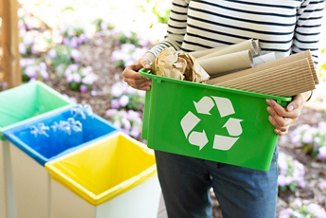Reducing a Pets' Carbon Print
We’ve all heard about reducing our carbon footprint, but what about the carbon pawprint of our pets? When your pet is living green not only will it ensure Earth’s good health, but your pet’s health as well. Here are some tips on how you and your furry friend can live a greener life.
1. Purchase Eco-Friendly Products
Give your furry friend products made from recycled materials or sustainable fibers (such as hemp) with non-toxic ingredients. A hemp collar and leash is not only hypoallergenic, but the fabric gets softer with wear and tear. You can also help your pet sleep more soundly by purchasing beds made from organic cottons and recycled PET bottles. An option for toys, upcycle and reuse what you already have, turn an old tennis ball and t-shirt into a “new” toy.
2. Protect Native Wildlife-Keep Your Pet Indoors
Cats are hunters. After habitat destruction, the biggest threats to birds are domesticated cats. Keeping your feline inside will not only keep them safe and away from traffic, but it also allow other small creatures (such as chipmunks, squirrels, birds, etc.) to stay safe too.
3. Put Number Two In Its Place
When walking your dog, please pick up after them. Many communities now have pet waste stations with disposable bags. There’s no excuse in leaving your pet’s unsightly waste for others to see or cause potential health threats. To step it up a notch, you can use biodegradable poop bags so your dog’s waste does not live in a landfill for 100 years to decompose.
Cat waste is an even more serious problem. About 2 million pounds of litter head to landfills each year. Clay litter (the most popular kind) is strip mined, but it lasts longer and contains smells better than many other options. One alternative is pine pellets, but many cats don’t appreciate the change in texture. Some people toilet train their cats, but cat waste contains Toxoplasma Gondii, a parasite that is harmful to both humans and sea creatures. It would be best to dispose cat litter in the trash using biodegradable bags.
4. Wash with Green Products
Our pets need bath time just like we do. When Fido gets grungy after a day of hiking or playing at the dog park, reach for a shampoo that is free of the same questionable and toxic chemicals you would normally avoid for yourself – parabens, sodium lauryl sulfates, cocamide DEA, cocamide MEA, TEA lauryl sulfate and propylene glycol. Known for everything from irritating skin to contributing to a variety of cancers, these ingredients have the same impact on your favorite pet.
5. Get a “Recycled” Pet. Adopt From a Shelter.
Each year, millions of animals are abandoned and nearly half are euthanized. Adopting your future furry friend not only provides a home for a pet that deserves to be loved as well, but rescues are spayed/neutered prior to their adoption. This helps to save a life, reduce the demand for additional breeding and controls the animal population/carbon paw prints.



